Sustainable Cities: Integrating Biodiversity into Urban Design
By 2050, over 70% of the world’s people will live in cities. Already, more than half do. This shift to cities offers a big chance to blend nature into our urban landscapes. This piece looks at fresh ways and real-life examples for cities full of life and ready for the future.
Our planet is getting more urban all the time. So, adding nature to city designs is key. Green spaces, natural paths, and solutions from nature create cities where people and the planet can thrive together.
We’ll talk about how thinking ecologically and loving nature affect city planning. These approaches help cities cope with the changing climate and make people’s lives better. Adding nature to city plans makes them not just more beautiful, but also healthier places to be in.
Key Takeaways
- Over 70% of the global population is projected to live in cities by 2050, underscoring the urgent need to integrate biodiversity into urban design.
- Sustainable cities with green infrastructure, biodiversity corridors, and nature-based solutions offer a path towards harmonious coexistence between humans and nature.
- Ecological urbanism and biophilic urbanism prioritise urban ecology and ecosystem services to enhance climate resilience and human well-being.
- Integrating biodiversity into urban design can transform cities into vibrant, livable spaces that foster a deeper connection between people and the natural environment.
- Innovative strategies, practical tools, and case studies will be explored to guide the creation of biodiverse and resilient urban environments.
Understanding Urban Biodiversity and Nature
With cities growing fast, knowing about urban biodiversity and nature is key. It helps make cities sustainable and good to live in. Urban biodiversity means the many plants, animals, fungi, and tiny life forms within a city or town. It includes both native and non-native species, thanks to human actions.
What is Urban Biodiversity?
Urban biodiversity is the mix of all life in the city. You find everything from common birds to rare insects. It’s a mix of natural and human-made features like parks and water bodies that shapes this life.
What is Urban Nature?
Urban nature is the green places that host city life, like parks and gardens. These areas are home to many species and do vital work like cleaning the air. They also make the city a nicer place for people.
Importance of Urban Biodiversity and Nature for People
Urban biodiversity and nature greatly help people and the planet. Being close to nature reduces stress, keeps us healthy, and brings us together. They also help fight climate change by making cities cooler and managing floods.
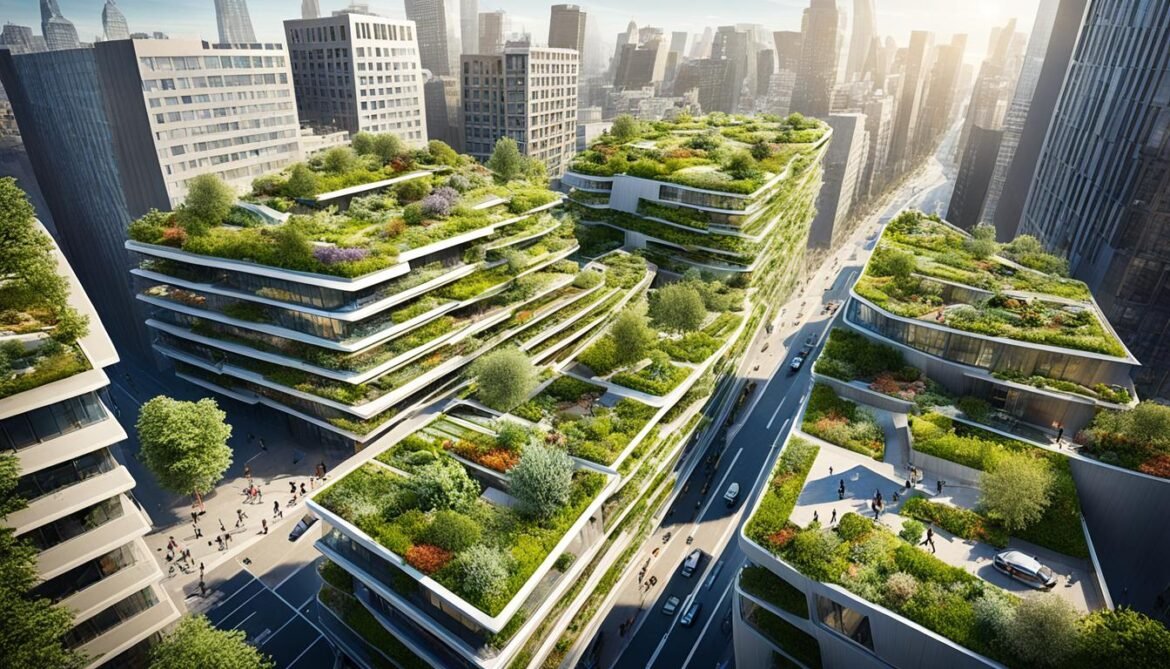
| Key Aspects of Urban Biodiversity and Nature | Benefits to People |
|---|---|
| Variety and abundance of living organisms in urban areas | Supports ecosystem services, such as air purification and temperature regulation, which contribute to human well-being |
| Green spaces, including parks, gardens, and urban forests | Provides opportunities for recreation, relaxation, and connection with nature, which can improve physical and mental health |
| Adaptation of native and non-native species to urban environments | Enhances the diversity and resilience of urban ecosystems, increasing climate change adaptability |
| Interaction between humans and urban nature | Fosters environmental awareness, stewardship, and a sense of community, contributing to social cohesion |
The Impact of Urbanisation on Biodiversity
Urban areas are growing rapidly, affecting nature and wildlife in harmful ways. Cities spread and take over the homes of many animals and plants. This causes them to lose their space and breaks up their living areas. It leads to fewer plants and animals native to the area. Plus, it lets new, often harmful, species move in, taking over the space.
Effects of Urban Sprawl on Well-being
City growth, or urban sprawl, doesn’t just harm wildlife. It can make life less enjoyable for those living there. As more buildings go up, places to unwind in nature become scarce. This change isn’t good for our minds or bodies. Being in nature helps lower stress, boost happiness, and gets us moving more.
Risks of Urban Development without Biodiversity Consideration
Building up cities without thinking about nature has serious effects. It makes the air, water, and ground dirtier. This isn’t good for the creatures or the people there. It also makes cities more vulnerable to extreme weather and other climate risks. These dangers threaten human well-being and wildlife alike.
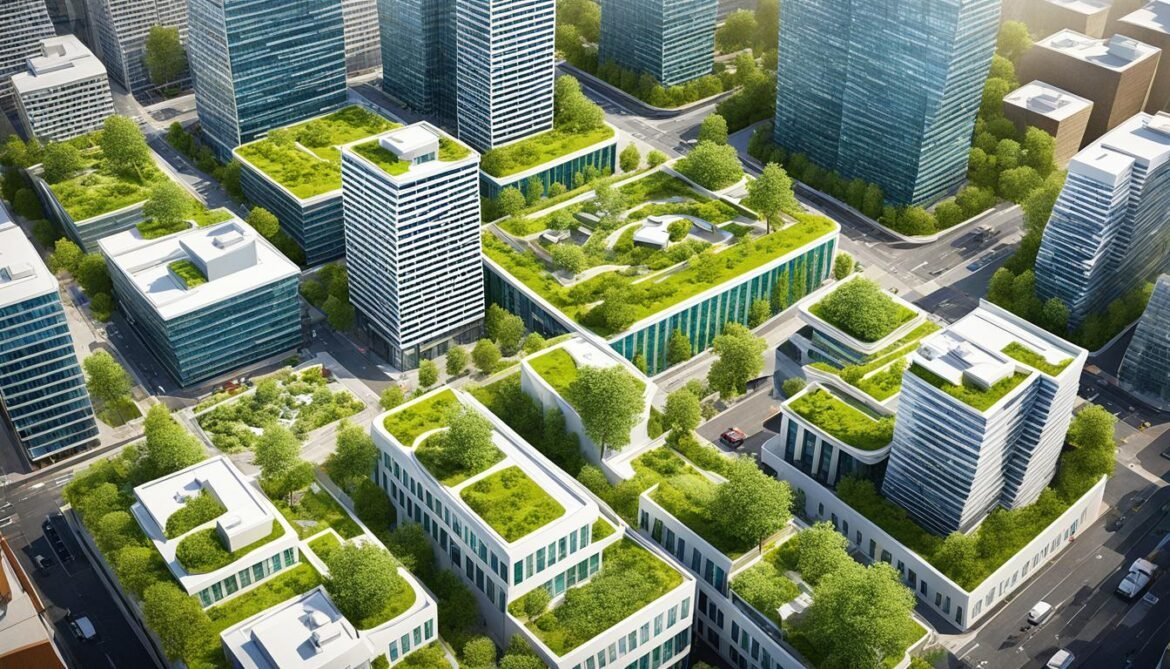
There’s a need to think about nature as cities get bigger. By planning cities with plants and animals in mind, we can protect both. This approach builds healthier, happier cities for us and the environment.
Ecological Planning: A Holistic Approach
In the face of rapid urbanisation, there’s a need to tackle environmental issues. Ecological planning steps in as a complete approach. It merges biodiversity and nature into city design and growth. This approach sees the deep links between all parts of a city and strives for a perfect balance between them.
Ecological planning recognises cities as more than just places where people live. They are complex ecosystems that need careful planning. This way, cities can thrive in a way that doesn’t harm nature. It also helps cities grow in a way that protects the planet for the future.
Seeing things from this all-encompassing view, keeping and making urban biodiversity better is crucial. It’s not just about the environment. It directly affects how comfortable and enjoyable cities are for everyone. Adding ecological principles to city planning can turn urban areas into lively, diverse places. These areas bring good things to those living there and the natural world nearby.
| Key Principles of Ecological Planning | Description |
|---|---|
| Ecosystem-based Approach | Recognising the interconnectedness of urban systems and the need to balance the needs of people, nature, and the built environment. |
| Nature-based Solutions | Incorporating natural elements and processes into urban design and development to address societal challenges, such as climate change, water management, and biodiversity conservation. |
| Biodiversity Conservation | Protecting and enhancing the diversity of plant and animal species within urban areas, promoting healthy and resilient ecosystems. |
| Sustainable Urban Development | Ensuring that urban growth and development are environmentally, socially, and economically sustainable in the long term. |
By following ecological planning principles, cities can be lively places with lots of benefits. They become hubs where nature and people live in harmony. This full approach creates sustainable cities. In these cities, the needs of all, including the environment, are equally important.
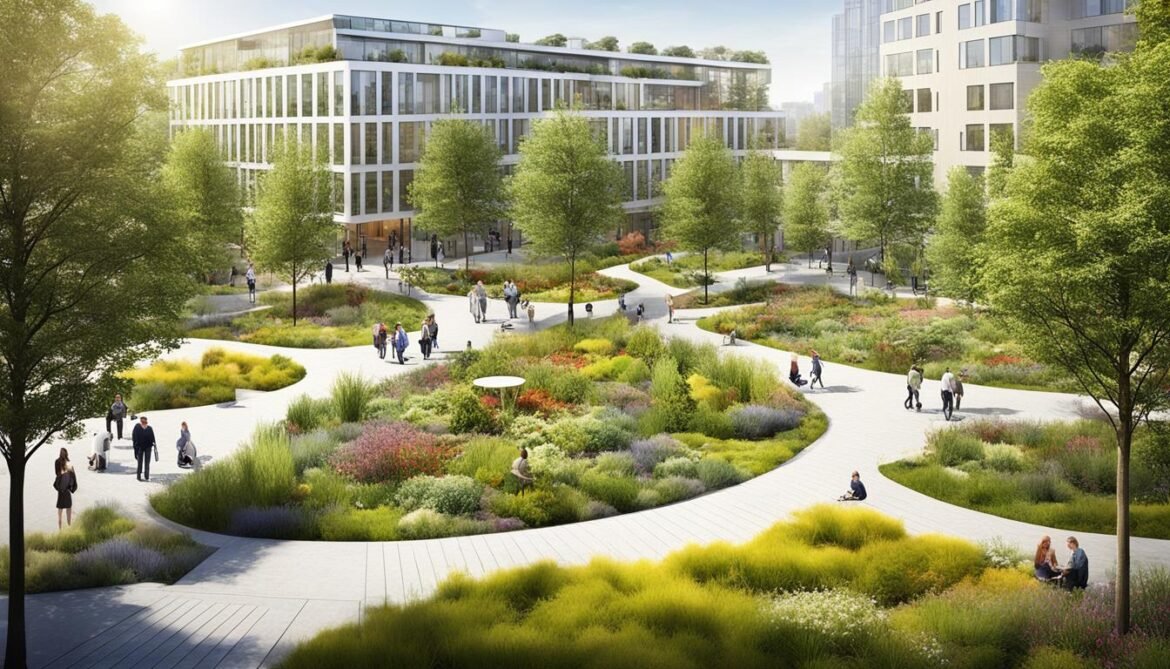
Protecting Nature and Biodiversity through Ecological Planning
As cities grow, saving and boosting urban nature becomes key. Ecological planning helps mix nature into city life. Cape Town in South Africa shows a great example of this.
Cape Town: A Case Study on Biodiversity Conservation
Cape Town is famous for its beautiful natural settings. It leads in saving urban nature. The city protects urban protected areas like the Table Mountain National Park and the Kirstenbosch National Botanical Garden. These places are home to many types of plants and animals. They also offer fun and learning for Cape Town’s people.
The city also set up biodiversity corridors. These corridors link the protected areas. They let animals and plants move safely across the city. By using things like parks, forests, and wetlands, the city fights against breaking up habitats. This helps in managing urban biodiversity.
Cape Town is dedicated to using ecological planning to save nature. It has created smart solutions like the Biodiversity Network. This network finds the best places to save based on nature’s value. Such plans help make sure urban areas keep growing without harming nature.
Cape Town shows that caring for nature in cities is very important. By learning from Cape Town, other places can also shine with nature. This makes for happy, healthy cities for people and the earth.
Sustainable Cities: Integrating Biodiversity into Urban Design
As cities grow, it’s vital they include nature in their designs. This helps create places that are green, strong, and full of life. We look at a plan that helps cities do just that.
Conceptual Framework for Urban Ecological Planning
This plan looks at a city’s green spaces and the good they do, figuring out the best spots to keep safe. It makes sure nature is part of everyday city life. This way, each city’s special natural features are kept in mind as it grows.
Understanding Value of Urban Ecosystems: Haizhu Wetland Case Study
The Haizhu Wetland in Guangzhou, China, stands out as a great example. It’s a big wetland right inside the city, helping with floods, cleaning water, capturing carbon, and giving homes to many animals. City planners are saving and improving this wetland, making it part of the whole city scene.
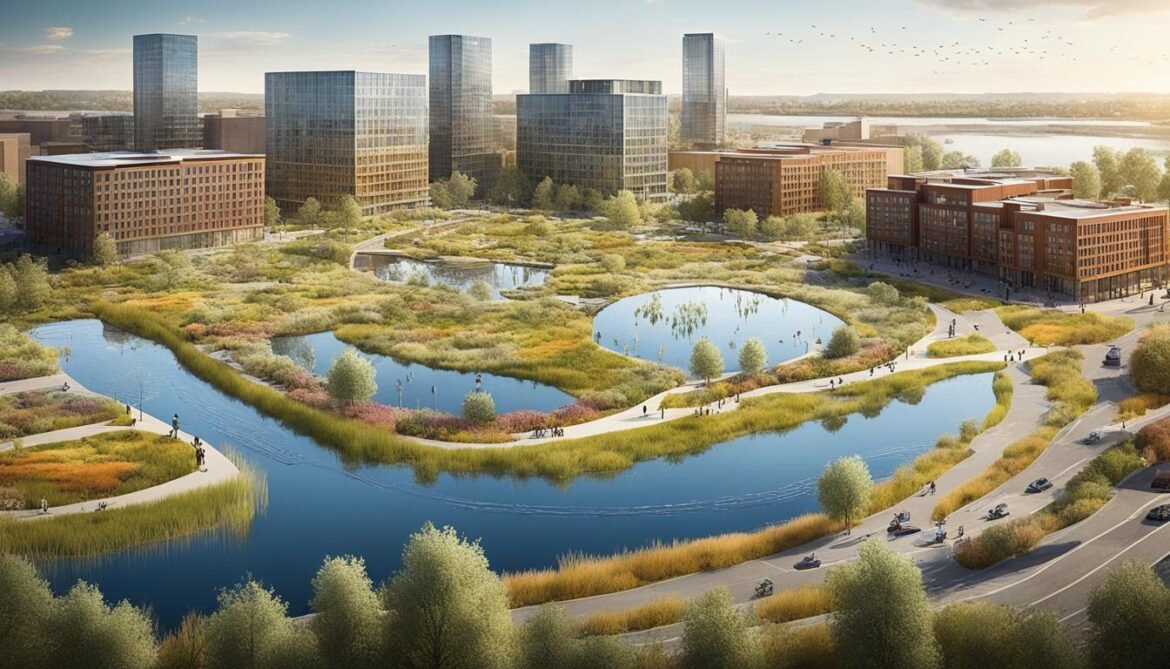
Studying the Haizhu Wetland shows us why we should care about urban green areas. These places offer many benefits. Understanding this helps city leaders choose wisely, focusing on saving nature. This leads to cities that are better for both us and the environment.
Analysing and Comparing Biodiversity for Urban Planning
Making cities green and sustainable needs us to really know about urban biodiversity, urban nature, and urban ecosystem services. We’ll show you practical ways to look at and compare these key aspects. This helps city planners and leaders make smarter choices. They can better include biodiversity in how they design towns and cities.
Tools for Assessing Urban Nature
To start, we must check how much and how good the urban nature in a city is. The InVEST (Integrated Valuation of Ecosystem Services and Tradeoffs) tools are great for this. They were created by the Natural Capital Project. These tools help map and measure the health of green spaces in cities. This includes places like parks, gardens, and wooded areas. Using InVEST, planners find spots that are important for nature. They also learn about the good things, or ecosystem services, these natural areas give us.
Tools for Assessing Urban Biodiversity
Checking on urban biodiversity is key, too. This means looking at the different plants and animals living in our cities. The Singapore Index on Cities’ Biodiversity, or the City Biodiversity Index, is a tool for this. It helps cities track how well they’re doing with their local biodiversity. This index looks at things like how many local species there are, the services these ecosystems provide, and how well they’re managed.
Tools for Assessing Urban Ecosystem Services
It’s also vital to see what benefits ecosystem services bring to city life. These are things like keeping the climate good, cleaning the air, and places for fun. The InVEST tools can measure and map these services in cities. This info helps in making decisions and planning with nature in mind.
Using these powerful decision-support tools, city planners and leaders can get a thorough look at urban biodiversity, urban nature, and urban ecosystem services. This understanding can help them choose what to focus on. It guides them in creating cities with strong nature. These cities will be healthy, vibrant places for people and the environment.
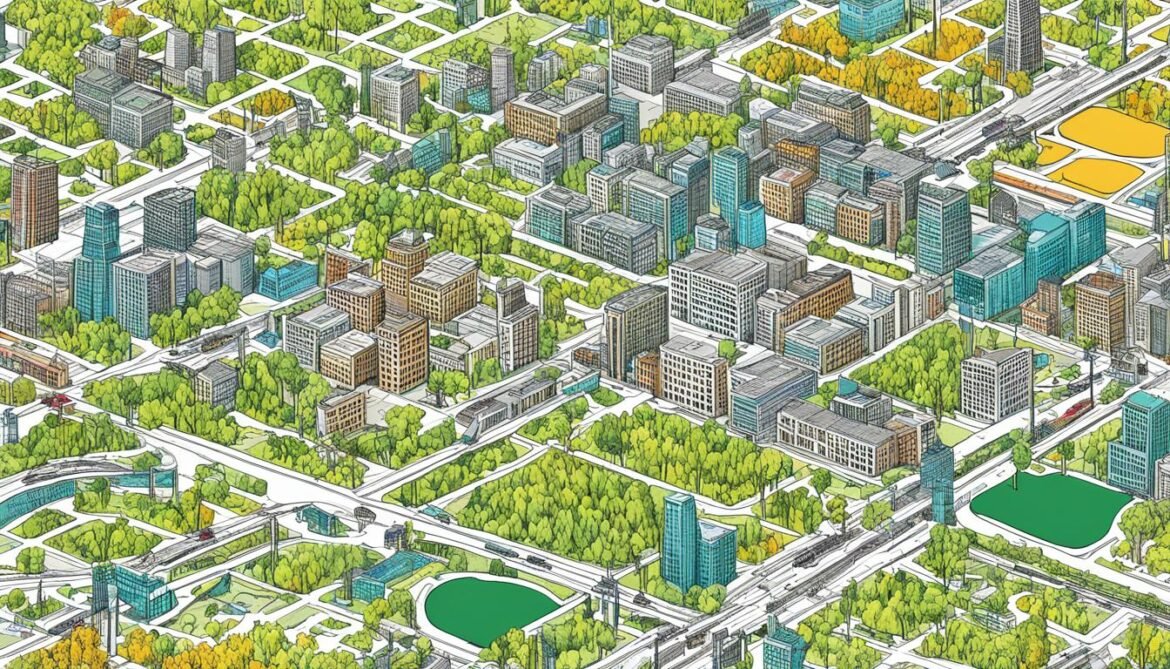
Zoning Laws and Urban Design for Biodiversity Integration
As cities grow, we need to think hard. We can use zoning laws and urban design to bring nature back into our city centres. A big idea is to use zoning rules to keep special places safe for animals and plants. This stops our building from destroying their homes.
Nature reserves and green corridors are set up in certain spots. This keeps our trees and wildlife safe. It also gives us cool places to hang out and learn about nature. So, it’s a win-win for us and the environment.
Also, we can make the places we build better for living things. We do this by adding green roofs, urban forests, and bioswales. These help make homes for many different species. They also help clean our air and water, and keep the city from getting too hot.
When making plans, we should not forget the nature around us. If we mix building with nature smartly, everyone wins. Our cities become better for living and are safer against bad events. Protecting nature also means we get to enjoy green spaces in our city.
| Zoning Strategies for Biodiversity Integration | Urban Design Strategies for Biodiversity Integration |
|---|---|
|
|
By blending zoning laws and urban design thinking, we can make amazing spaces. This helps both us and nature. It’s crucial for creating cities where both nature and people can thrive. This is how we ensure our cities are great places for the future.

Community Engagement for Biodiverse Cities
Cultivating biodiverse cities requires everyone’s effort. When local people join in, they can help their city bloom. The mix of their ideas, time, and care sparks true, lasting change.
Spatial Experimentation and Social Design
Working together on urban biodiversity can be fun yet impactful. By turning unused spaces into green spots, communities grow closer. Projects like community gardens and placemaking make everyone feel like they own these places.
This approach also includes fun ways to learn, like citizen science or walks in nature. These activities build a bond with the outdoors. They show how vital urban nature is and get people involved in caring for it.
| Approach | Benefits |
|---|---|
| Spatial Experimentation and Social Design |
|
| Nature Therapy and Environmental Awareness |
|
City residents can truly change their surroundings for the better. Using creative, community-focused methods can make cities greener, stronger, and nicer for all.

Economic Benefits of Urban Biodiversity
Cities gain economically by adding nature to their design. Urban green spaces offer ecosystem services. These include carbon sequestration, stormwater management, and air quality improvement.
Urban forests cut down costs by reducing the impact of climate change. They absorb carbon dioxide and lower the need for costly carbon offsetting. Green infrastructure eases stormwater management. This lessens flood risk and the costs floods bring.
Urban biodiversity boosts human health and wellbeing. Green spaces lower stress and increase physical activity. This leads to both individual and societal economic gains.
In cities, urban biodiversity lures tourists and supports activities like cycling. This benefits local businesses and raises property values. Importantly, it creates a need for green jobs. This includes roles in urban forestry and ecological restoration, driving economic growth.
| Economic Benefits of Urban Biodiversity | Description |
|---|---|
| Carbon Sequestration | Urban forests and green spaces can absorb and store atmospheric carbon dioxide, reducing the need for costly offsetting measures. |
| Stormwater Management | Green infrastructure, such as permeable surfaces and wetlands, can alleviate the burden on municipal stormwater systems, reducing the risk of flooding and associated damages. |
| Air Quality Improvement | Urban vegetation can filter air pollutants, improving air quality and reducing the impact on human health and related healthcare costs. |
| Temperature Regulation | Urban green spaces can help mitigate the urban heat island effect, reducing energy demands for cooling and the associated costs. |
| Human Health and Wellbeing | Access to nature and green spaces can have a positive impact on mental health, reduce stress, and encourage physical activity, leading to economic benefits for individuals and society. |
| Tourism and Recreation | Urban biodiversity can attract visitors and boost local economies through tourism and recreational activities. |
| Green Job Creation | The demand for skilled professionals in urban forestry, ecological restoration, and sustainable landscape management can drive job growth in the green economy. |
Recognising the economic benefits of urban biodiversity helps city leaders. They can argue for mixing nature in urban designs. This strategy improves cities’ environmental sustainability. It also brings new economic opportunities and backs climate change adaptation.
Conclusion
As we’ve shown, including urban biodiversity and urban nature in sustainable cities is key. It makes cities strong and nice to live in. An ecological planning way helps city leaders and planners achieve this. It brings good things for nature and people too.
Tactics like protecting key areas and using green ways help a lot. They make our cities better and connect people to nature. Recognising how important urban nature is, we can make cities where both people and nature thrive together.
Building sustainable cities focusing on urban biodiversity needs everyone’s help. Working together and with smart design can achieve this. It leads to cities that are strong against environmental problems. Plus, they make life better for all who live there.
FAQ
What is the importance of integrating biodiversity into urban design?
What is the difference between urban biodiversity and urban nature?
How does urbanisation negatively impact biodiversity?
What is ecological planning, and how can it help protect urban biodiversity?
What are the key strategies for integrating biodiversity into sustainable cities?
What are the economic benefits of preserving and enhancing urban biodiversity?
Source Links
- https://instituteofsustainabilitystudies.com/insights/lexicon/reviving-urban-biodiversity-how-cities-can-drive-nature-conservation/
- https://www.thegpsc.org/sites/gpsc/files/final_urban_nature_and_biodiversity_for_cities.pdf
- https://iucn.org/story/202305/embracing-biodiversity-paving-way-nature-inclusive-cities




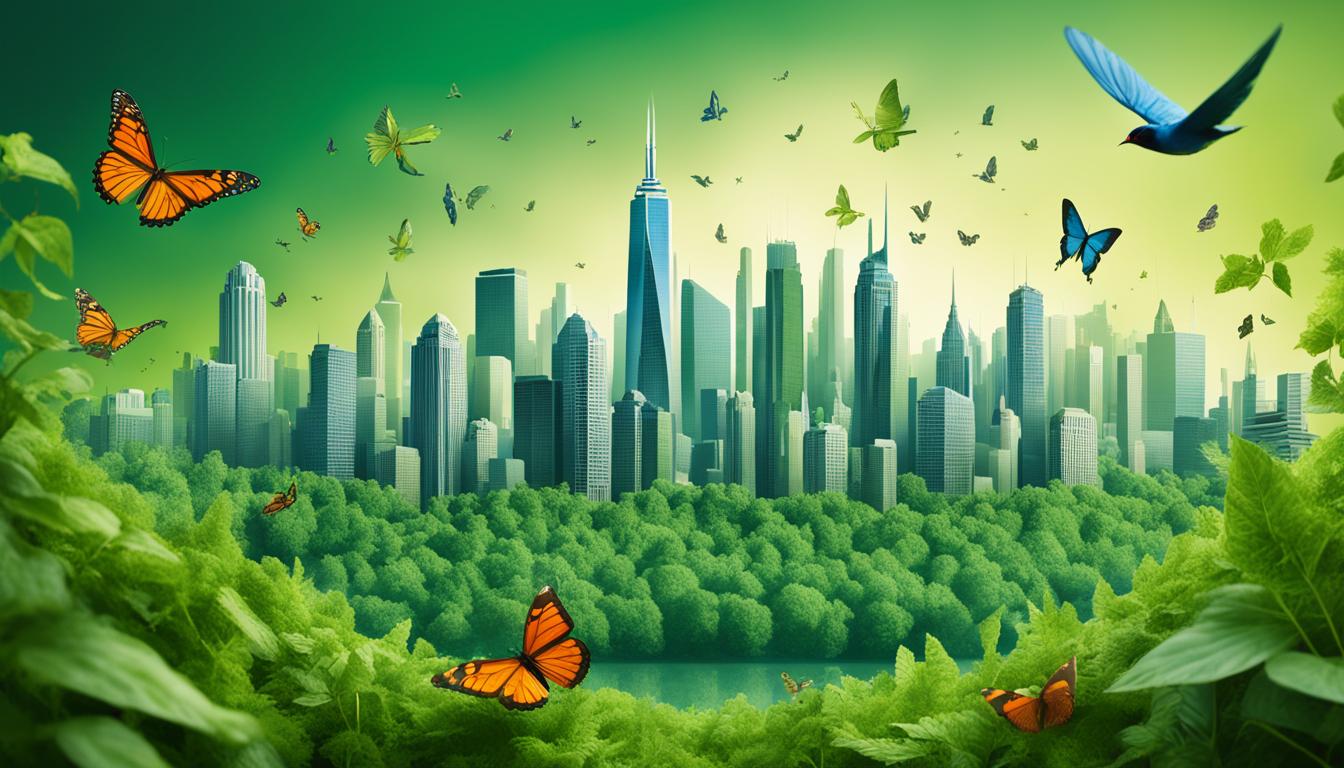

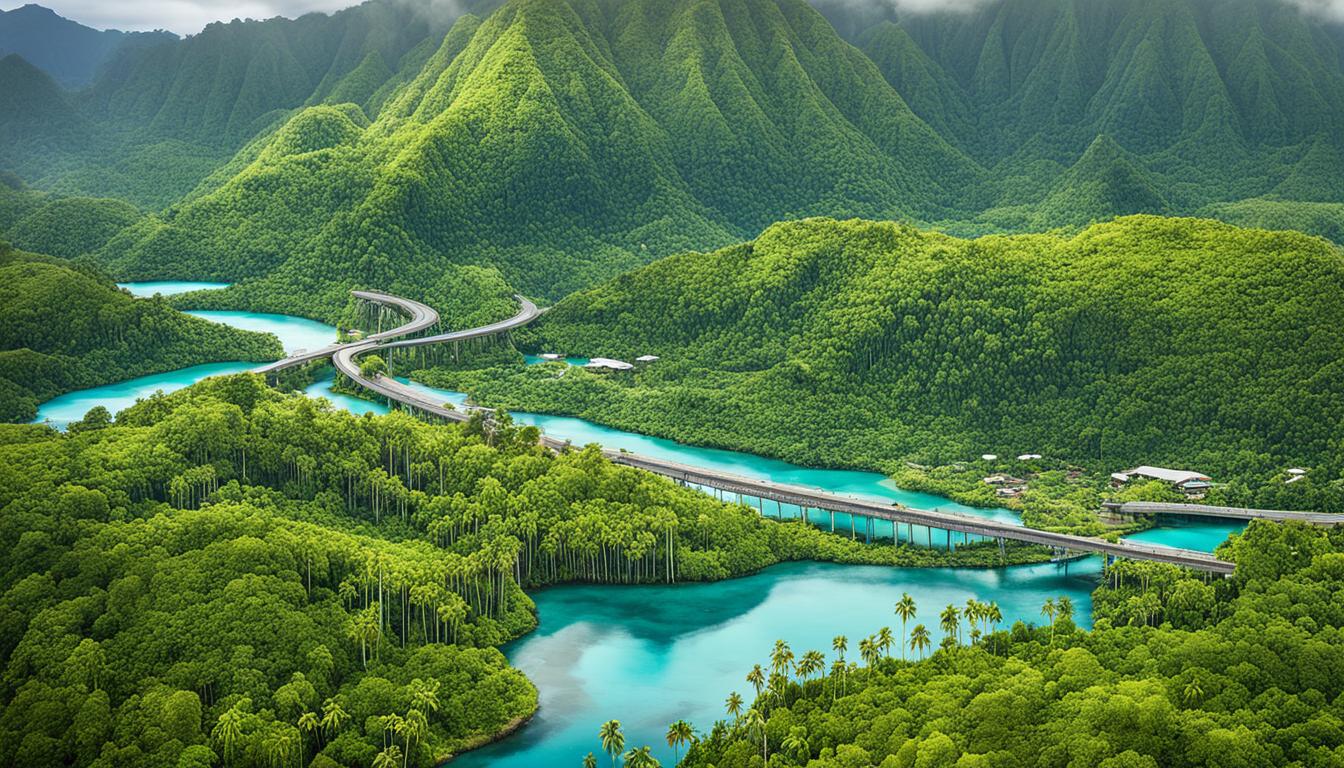
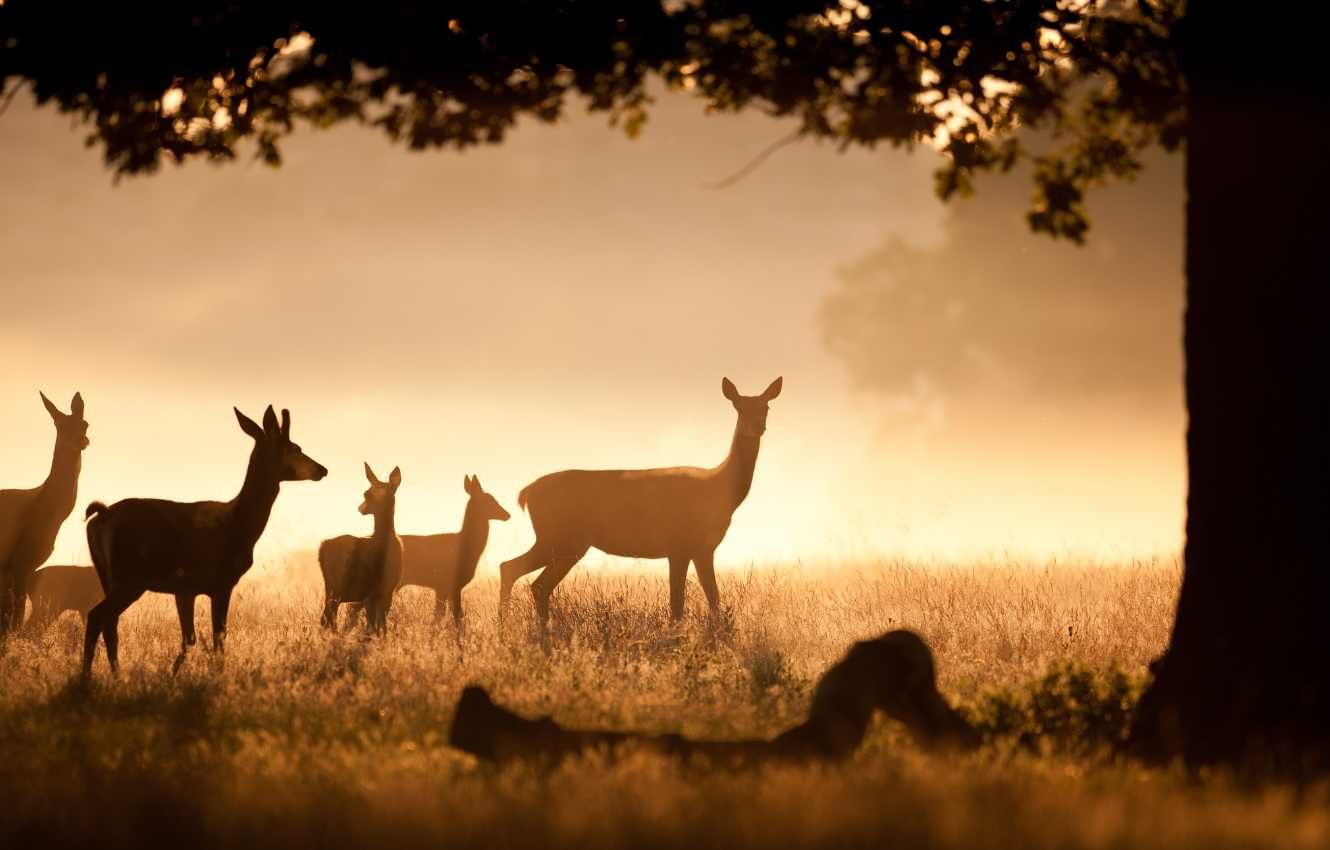
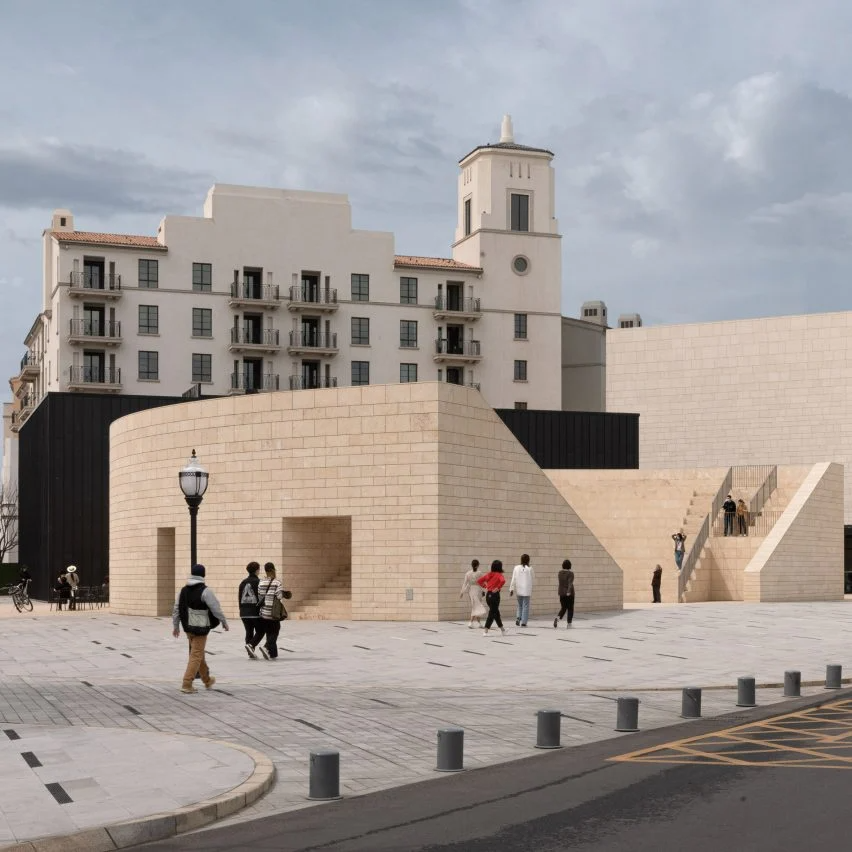
Transforming Existing Buildings into Sustainable Powerhouses - Constructive Voices
12 months ago[…] and installing operable windows can increase natural light and promote ventilation. Additionally, integrating biodiversity into urban design through green walls and roofs can create healthier and more attractive […]
Nature in the Metropolis: Blending Green Spaces into Urban Design - Constructive Voices
10 months ago[…] of nature’s benefits within city limits to the creation of London squares in the 17th century3. Despite the challenges posed by industrialisation, a movement led by visionaries emerged, pushing […]